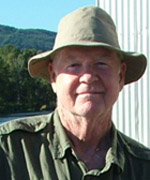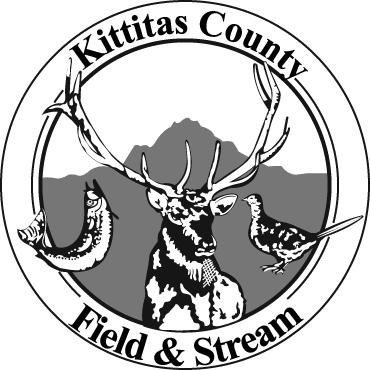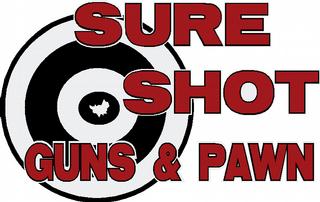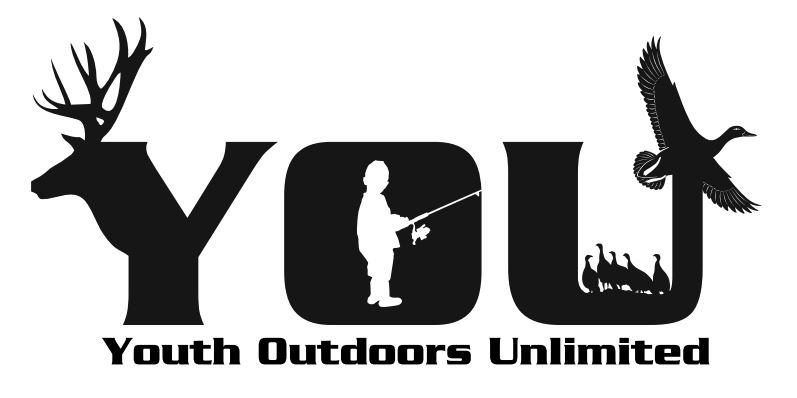Archive for March, 2019
Ninth Annual James Groseclose Memorial Pheasant Hunt
Last Saturday, we held the Ninth Annual James Groseclose Memorial Pheasant Hunt out at the Cooke Canyon Hunt Club. Jim went to his Happy Hunting Grounds during his beloved Sweet 16 just about this time in March, 2010 – right after passing two flight physical exams.
Decades ago, a very wise teacher observed that a man or woman would be as big as the number of things to which he or she attended with interest. Jim Groseclose was a very big person. He flew fixed-wing and helicopter aircraft in Vietnam, and spent eighteen months as a POW there. He became one of the few Army officers to complete Navy SEAL training. He never said much about it, but occasionally admitted having used his skills and training in private industry and in some of our government’s special needs. A certified diving instructor, he worked for a time with Jacques Cousteau’s divers on the Calypso in Mexico.
Jim was a troubleshooter, working on problems along the U.S. border with Mexico, as well as being one of Boeing’s structural engineers chasing aircraft problems to one or another locale across the globe. At the time of his passing, he had been instructing in the Flight Tech/Aviation Program at Central Washington University. Students would speak of him as unflappable, with high standards (explained very clearly and with compassion), and the best teacher they ever had.
He was a master – NRA certified – firearms instructor, always available to help people learn to safely handle handguns, shotguns or rifles. He spent time at Camp Perry and competed in most every major shooting event in the country.
Through everything and every place, he loved and trained his dogs and horses – and hunted and fished. Whenever you were around the guy, there was a sense of impending adventure.
I first met Jim Groseclose at the monthly Rodeo City Radio Club (RCRC) breakfasts. He, along with Jim Davis, were squandering remaining odd moments of their lives chasing birds with Groseclose’s amazing Labrador retrievers, and fishing. At some point in a HAM radio conversation, I received an invitation to join them. We became the James Gang.
Two weeks before Jim’s sudden death, he (J1), Jim Davis (J2) and I (J3) organized a James Gang Pheasant Adventure on some of the Cooke Canyon Hunt Club ground. We enjoyed a perfect armed walk through good pheasant cover, with his beloved Labs. Being part of that James Gang, chasing pheasants, ducks, quail and chukars with two great Labs and two true gentlemen added a richness to my life I had been missing since my days with Freebe the Wonder Dog.
After J1 left us, Jim Davis and I agreed that, as long as one of us was able, there would be a Jim Groseclose Memorial Pheasant Hunt during the NCAA Tournament at Cooke Canyon. Hunters and dogs have morphed a bit, but J2 and I have carried on.
Thus, last Saturday we assembled for our Ninth Annual. Homey Bill Boyum and his German shorthair Maisy, were again along to play. This year black Lab Blaze brought her armed Homey, Paul Jewell, and Jim Davis, J2, came armed with his camera to properly record the day. None of us had been busting cover for some months, but Bill, Maisy, Paul, Blaze and I settled into a hunting rhythm in time to find our birds. There is something magical – almost breathtaking – about watching a dog work the cover and the breeze, finding bird after bird as she was born to do. Maisy was near-perfection, Blaze performed a minor “Find the bird, Blaze!” miracle or two, and those of us carrying scatterguns did our part, as well.
The Ninth Annual James Groseclose Memorial Pheasant Hunt was a success, in the ways we set out for it to be. After bird cleaning, and thanking Alice and Doug for the great conditions they maintain at their Cooke Canyon Hunt Club, we acknowledged our leader, J1, and called it a day.
Given J1’s love of flying, his steadfast conviction to experience, training and intuition – and his unflappable nature, I thought this might be a good place to share the last of this year’s writing contest entries: Dwight “Lee” Bates’ “The Engine Quit.”
“In 2005 I flew in a Piper Tri Pacer light airplane back to Oshkosh, Wisconsin for the biggest air show in the US. As we landed I said, “I smell gas.” So the next day we put in a new gas tank sump valve and thought that we fixed it.
“After 5 days we took off to return home to Ellensburg. I still smelled gas as we approached the Albert Lee Minnesota Airport. The engine suddenly quit. The pilot flying it tried everything to restart the engine. I yelled, “Switch the tanks to get the engine restarted.” The pilot switched the tanks and just above the ground the engine restarted. The pilot asked me how I knew to do that and I said, “Training. And the gas tank is still leaking,” but the pilot did not agree with me. So I said, “Let us fill the tanks tonight when we land, and measure the fuel before we take off in the morning.” This we did and found the level had dropped in one tank and you could smell gas. It had leaked overnight. So we looked for the leak and found an upholstery screw stuck in the gas line. As it rusted away it had started leaking.
“So in the mechanics shop I found some rubber hose and clamp I used the seal the leak. We had no further trouble but what a scare!”
Comments Off on Ninth Annual James Groseclose Memorial Pheasant Hunt
The Field and Stream Club – First 100 Years
March, 1919.
Had there had been an endangered species list then, it would have included elk, white-tailed deer, wild turkeys, Canada geese, and most waterfowl species. The Boone and Crockett Club, founded in 1887 was actively working to raise awareness of the wildlife Americans were in genuine danger of losing. Hunting sportsmen across the US were pushing the development of a “duck stamp” (a tax on themselves, really) to restore wildlife habitat – mostly wetlands – and made it happen in 1934. Another, bigger, tax was under discussion by those same sportsmen, and, thus, the 1937 Pittman-Robertson excise tax on firearms and other sporting goods.
In March of 1919, Oregon reopened beaver trapping after 20 years. Lingering budged problems from WWI meant big cuts in game warden numbers and irregular pay (as much as six months between paychecks) for fish and game workers across the West. In response to the post-WWI interest in competitive shooting, Savage was the first to announce a .22 caliber competition model; the Savage model 1919 NRA bolt action, seven pound rifle with 25 inch barrel, aperture rear sight and a Marine Corps type front sight, for $18.50. That year, South Dakota announced its first pheasant season, and Custer State Park became SD’s first state park.
In those post-WWI days, entire families still traveled by wagon or auto into the mountains for picnic gatherings or extended stays to escape the heat of the valleys. Seeing wildlife was an event worth sharing. Outdoor magazine covers regularly showed hunters or riders shooting off the backs of horses. Women rarely hunted.
In the context of those times, in March of 1919, 75 charter members agreed to dues of 50 cents a year, and formed the Ellensburg (Washington) Sportsman Association. Austin Miers was its first President, and J.H Van Gusen its first Secretary-Treasurer. As far as can be told, the Association was, from the beginning, committed to a motto of “Working Today for Tomorrow’s Wildlife.”
Early records are sketchy at best, having been drowned, shuffled among record-holders, and simply lost. Various notes and letters, however, give insight into the Club’s never-ending efforts to live up to its motto by speaking up, forming partnerships, and working as closely as possible with those charged with looking after the lands and wildlife of Paradise.
Nor did Association members forgot to celebrate the sporting life, as indicated in an uncredited typed letter found among the earliest records. A bird dog field trial was held in the “forenoon” of September 17, 1920 north of Ellensburg. Organizers reported hundreds of birds on ag land where the trial was held – especially “Hungarian pheasants” (now commonly “Huns,” but properly Hungarian partridge). Club member Orrin Craig’s pointer, Teddy, took home first place, and it was reported that the Huns outnumbered “Chines” pheasants “8 to 1.”
Newspaper accounts occasionally reported on various shooting activities and competitions sponsored by the Club, including a WWII “Butter Shoot.” This two-day trap shoot drew many hunters from Seattle and across the state (butter was rationed in those days, and well worth competing for), earning the club well over $600.
At some point in the 1930s, the Association became the Kittitas County Field and Stream Club. It incorporated in 1946, to more effectively deal with funding and supporting the post-WWII outdoor interests of Americans.
Through its ten decades of existence, the organization partnered with dozens of local, regional and national organizations. These included Club predator control programs with U.S. War Bonds as payment, North- and South-Central Washington Sports Councils, Washington State Big Game Council, U.S. Soil Conservation Service, Backcountry Horsemen of Washington, National Wild Turkey Federation and the Cascade Field and Stream Club.
Projects managed by the Club or in partnership with others included the Yakima River Cleanup, repairing and preventing game and human damage to the Knudson Ranch, Tamarac Springs, Sorenson’s Pond, McCabe Pond, Whiskey Dick Creek, Fio Rito and Mattoon Ponds, wildlife safety access to irrigation canals, and many handfuls of others.
Those partnerships, and stand-alone Club efforts, raised funds for conservation and habitat for gamebirds and mammals in the county, and drew folks together to support or oppose policies affecting the outdoor future of Washington and American families.
The founders of the Kittitas County Field and Stream Club worked across a wide band of future-oriented activities ranging from the setting aside of regional wildlife areas and parks to the implementation of the 1937 Pittman-Robertson excise tax, which supported the immediate development of professional game management agencies here and across America. (Those P-R funds have produced well over seven billion dollars for wildlife management – some 70% of state wildlife agency budgets today come from those taxes and license fees paid by hunters.)
From its founding, Club members have seen children as the emissaries sent to a time we will never see – what they take forward is critical. More about those efforts next week.
On March 30, the Kittitas County Field and Stream Club’s Chukar Run Banquet will kick off the Club’s second 100 years. Tickets available from Board members or www.kittitasfieldandstream.org. Have yours yet?
Comments Off on The Field and Stream Club – First 100 Years
What about the Little Birds in the Cold?
I don’t know why it surprises me, but it seems that, over time, many of the most interesting “You really should think about following up on that!” questions are from the mouths of babes.
Case in point:
Homey and I were in my office comparing notes on snow and cold and families right after that last eastern Washington post-snowfall cold snap. “We are really grateful to have a dry, warm house and plenty of food. And we don’t often think about the outside critters. The other morning we were all in robes drinking hot coffee and hot chocolate, just sort of staring out at the little birds at our feeder and talking about the bitter cold only inches away on the other side of the window. Our little boy’s nose was against the glass, and our four-year-old was absently blowing her breath on the window, obviously lost in some thought. Then, ‘Mommy? If its freezing, why don’t the tiny little biwds fweeze?’ Mom and I looked at each other and said, ‘Well, we give them food, but they obviously have other ways to stay warm. We’ll find out and report back.’ So, with those tiny bodies… How do they not wake up frozen to death?”
As chair of the Wintering Wildlife Subcommittee of the Reecer Creek Rod, Gun, Working Dog and Outdoor Think Tank Benevolent Association, I was duty-bound to respond. “Well, of course, it starts with enough food,” I said. “They have to eat regularly or they die. And the ideal food will vary from species to species, so we include oily seeds and suet for those that need oil as a good burning fuel for their bodies, keeping their metabolic rates up.”
I reached for my copy of “The Birder’s Handbook,” by Ehrlich, Dobkin and Wheye, and pulled up Bird Whisperer of Paradise Deborah Essman’s list of our most common small birds. I offered a couple bird/nature guides to help his kids identify the birds at their feeder (Bird Whisperer’s list includes the English – house – sparrow, house finch and gold finch, black-capped chickadee, dark-eyed junco and redpoll), and showed him how to find, in the Handbook or online, the food and life needs of each bird that he and his family might identify.
Obviously, if a bird or animal’s metabolism stops, it dies, and different birds have different metabolic rates. Smaller birds have proportionately greater surface area in relation to their body mass than do larger birds, so little birds lose their body heat faster in the cold. Since they all maintain similar body temperatures, small birds have higher rates of metabolism than big ones and eat proportionately more food. Hummingbirds, for example, have the highest rate of metabolism of any animal – about a dozen times that of a pigeon and a hundred times that of an elephant, so they must consume their weight in nectar daily. (It is believed that no warm-blooded animal could survive if it was smaller than a hummer, since it could not eat fast enough to stay alive – but some argue for the shrew.)
Each bird has its own needs and many have special adaptations. The redpolls, for example, have a partially bi-lobed pocket about midway down their necks, where they can store seeds for when needed. The little chickadees are often seen “caching” seeds in some crevice or other hiding spot. Most, however, just need handy food.
Then there are all those feathers holding in the heat generated from metabolizing that food. We have all observed birds sitting “fluffed up” in some protected spot (the Hucklings called them “feather balls”). This erection of feathers traps air in innumerable tiny pockets, providing excellent insulation (think featherbeds). A bird’s skin temperature may be 75 or more degrees warmer than the air less than an inch away. You have probably noticed that juncos, finches and sparrows foraging in cold weather frequently drop down, covering their legs and feet with their breast feathers while pausing in their food search, thus minimizing heat loss from featherless parts of their bodies.
Dark objects commonly absorb more sunlight than lighter objects, and it has been assumed that dark-feathered birds absorb more energy that light-colored birds. It turns out that there are several other factors at work, and a great deal depends on such things as wind speed and whether feathers are sleeked (laid back) or erected. In fact, in cold temperatures and moderate winds, erect white plumage gains heat better (and is more resistant to heat loss) than dark plumage.
To help birds keep feathers clean – thus best able to erect and insulate – provide water for baths, keeping it heated if possible. Provide areas near your feeders where vegetation is dense enough to still the wind (and protect from predators), and put up birdhouses or house-like structures where your little feathered friends can cuddle up next to other to minimize metabolic outputs.
It takes food and feathers to get these critters (from whom we derive so much pleasure) through the cold season. A thoughtful feeding area helps them maximize the use of each.
Homey, your kids will love helping to plan feeding areas and choose bird food. Happy cold weather bird watching.
Comments Off on What about the Little Birds in the Cold?







